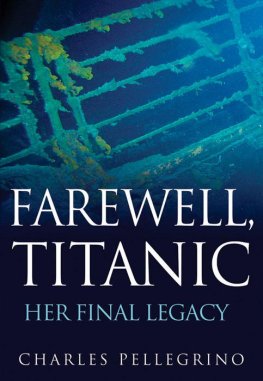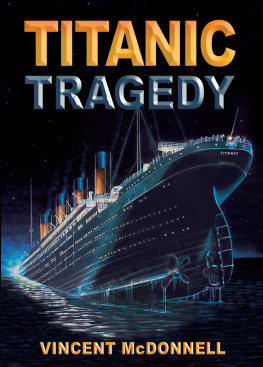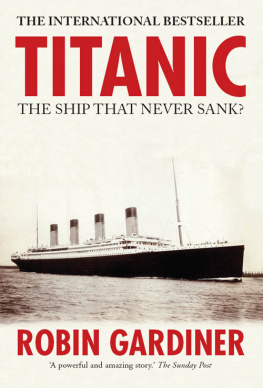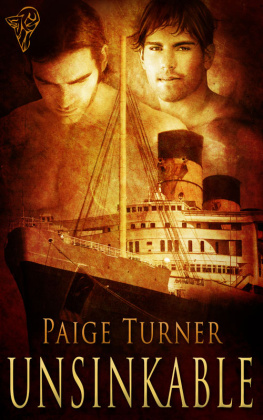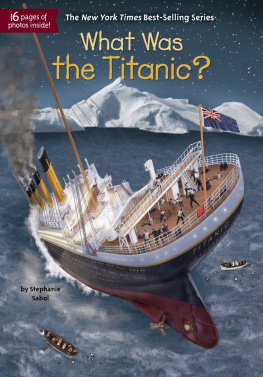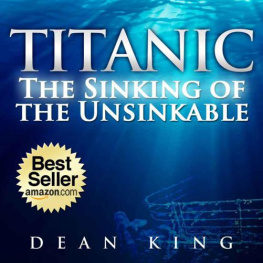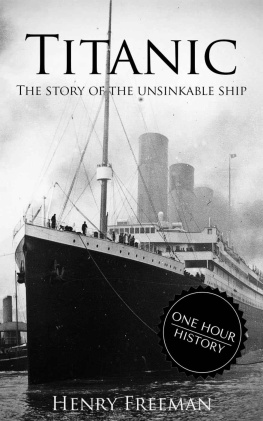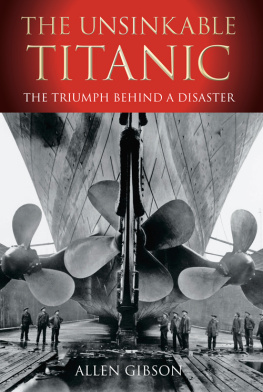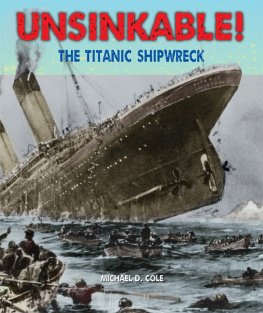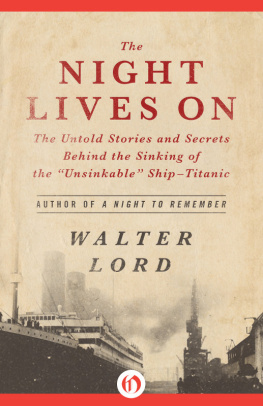Charles Pellegrino
FAREWELL, TITANIC
Her Final Legacy
To the first responders and other rescuerspast, present, and future

Foreword
by Tom Dettweiler
When I first met Charlie Pellegrino, we of the Dr. Robert Ballard team were in hiding. We had just done the most incredible, wonderful thing: we found the Titanic! Our lives were suddenly turned upside down. Everybody wanted to know everything about it. We had, however, just experienced an event so exciting yet so disturbing that it was hard to relate to those who had not been there. The worlds response was so overwhelming that we had to get away, return to our world of comfort, and return to sea, where life was on our terms and simpler. We had to escape, Bob and all of us, to give ourselves time to come back to reality, fathom what had been seen and accomplished, and put it into proper perspective, one we could deal with. So we set off on a research cruise designated as Argo-RISE, using our robotic sleds to explore the ridge systems in the mid-Pacific, where the planet is creating new volcanic material and new life, which then spreads toward the continents.
Upsetting this escape was the fact that Charlie was going with us with the goal of penetrating our team and finding out everything he could about how similar robots would someday travel into space and be used to explore the distant ice-covered oceans of Europa. As Charlie later told me, this cruise was a life-changing expedition for him. As we reviewed the Titanic pictures we had taken a few short weeks before and talked among ourselves about our find, Charlie was soon infected by the Titanic legend. His questions shifted from space to the Titanic and the voyage of discoverythe very thing we were hiding from.
What we soon realized was that Charlies questions were coming from a place different from that of the questions we had been bombarded with at home. The question we had grown especially tired of was Did you see any bodies? Charlie was different. Instead of the morbid question about bodies, Charlie asked, Did we see the humans? In other words, did we see those little bits of evidence that told of their presence, the shreds that defined each individuals character and told his or her unique Titanic storyamong them the story of the forward davit, still turned inboard, a testament to William Murdochs futile attempt to launch the last lifeboat.
Charlie collected little bits of evidence from us and began piecing together the actual process the Titanic had gone through during the sinking, tracking the debris field backward in time to explain why the wreck appeared as it did on the bottom. Talking to Charlie was like a session on a psychiatrists couch: he was able to draw out of us the precise things that had such an impact on us when we saw it live. The human drama we were seeing seventy-three years after the fact proved surprisingly disturbing, as our attention was drawn with increasing intensity to that cold Atlantic night in 1912. Finally Charlie was asking the questions that needed to be answered. This began a professional relationship between me and Charlie that has lasted more than twenty-five years, covering many discoveries and topics in ocean exploration, but always firmly tied together by a unique, direct perspective into the Titanic story.
When James Cameron was looking for someone to help develop the characters and add authenticity while making the movie Titanic I introduced him to Charlie. That led to another fruitful professional relationship, one that took Charlie down to the Titanic to experience firsthand the special hold that ship put on all of us, a mystery Charlie describes so well in this book. Its a unique club, and Charlie is one of the few individuals who is able to make his readers feel like a member.
The real treasure that Charlie shares with us in his three Titanic booksespecially in Farewell, Titanicis the intimate human details that resided in such places as the volumes of files accumulated by Walter Lord, the acknowledged dean of the Titanic story. For decades, Titanic survivors had shared their stories with Walter in personal correspondence, and Charlies access to these files along with his forensic abilities to piece together events and evidence has woven an unprecedented, detailed account that takes you right to the decks of the Titanic on that horrible April night.
When my teenage son used to answer the phone and talk for half an hour or so before telling me the call was for me, I knew it was Charlie calling. After I got off the phone, my son would spend hours enthusiastically telling me all the incredible things Charlie and he had discussed, ranging from the bottom of the ocean to deepest outer space. It is Charlies ability to make science exciting and to put it into terms we can all understandand to bring out sciences practical effects and often long-ranging impactsthat will make Farewell, Titanic as much an enjoyable, educational, and exciting read for you as it was for me.
I firmly believe that as the one-hundredth anniversary of the Titanics sinking approaches, her final chapters are now being written. No one is better suited than Charlie to put the grand old lady to rest with the impact and dignity that she deserves. Here is the real story of the Titanic.
Tom Dettweiler is the scientist who, after building and operating a deep-ocean robot that first mapped abyssal nodule fields, was brought to Woods Hole Oceanographic Institute to work with Robert Ballard as co-designer of Argo, the robot that discovered and filmed the Titanic. He also served as science officer aboard Jacques Cousteaus research vessel, the Calypso. Dettweiler located the Japanese World War II submarine/aircraft launcher I-52 and was awarded a medal for locating the Israeli submarine Dakar. He is currently senior project manager for Odyssey Marine Exploration and has turned much of his attention to research into explorations of the lost ships of the Discovery Period, a venture analogous to our current voyages into space.
How strange to think that all of this began for me as just another interesting thing happening on the way to Jupiter.
In 1985, after the Voyager space probes started to support Jesse Stoffs and my models of new oceans under certain icy moons of the outer solar system, our designs for the Europa melt-through probe and the Titan probe (with Brookhaven physicist Jim Powell) made me aware of Tom Dettweilers and Bob Ballards still-evolving deep-ocean robot probe Argo. Argo was directly ancestral to the machines we intended to send as far afield as Titan. My baptism in the field of deep-ocean archaeology began with the expedition Argo-RISE, during a robotic reconnaissance of the same life-giving springs of the deep that Powell, Stoff, and I hoped one day to find under the icy surfaces of Europa, Ganymede, Enceladus, and Titan.
At the time, Ballard thought Stoff and me a bit odd, we were later told. We contacted him in fall 1978, raving about his discovery of a deep-ocean food chain based on sulfides instead of sunlight. He had just opened up a window on the universe.
In the autumn of 1985, forensic archaeology was only an embryonic science developing in Pompeiis sister city, and the field of deep-ocean archaeology had not been invented yet. I joined the Argo-RISE expedition as someone whose focus was almost entirely on astrobiology. I boarded the Research Vessel Melville

